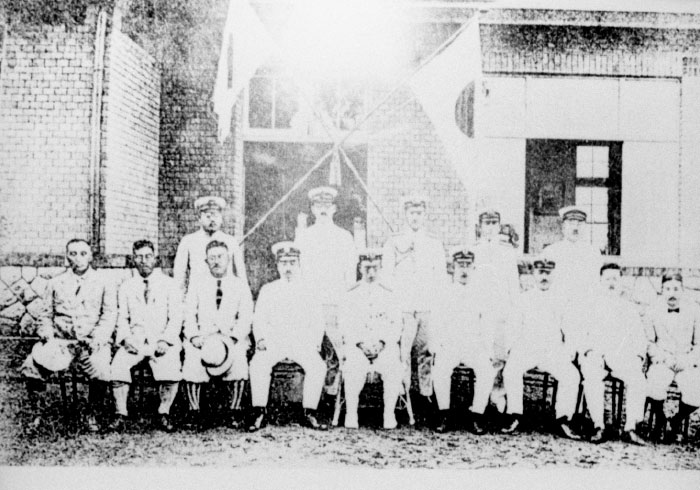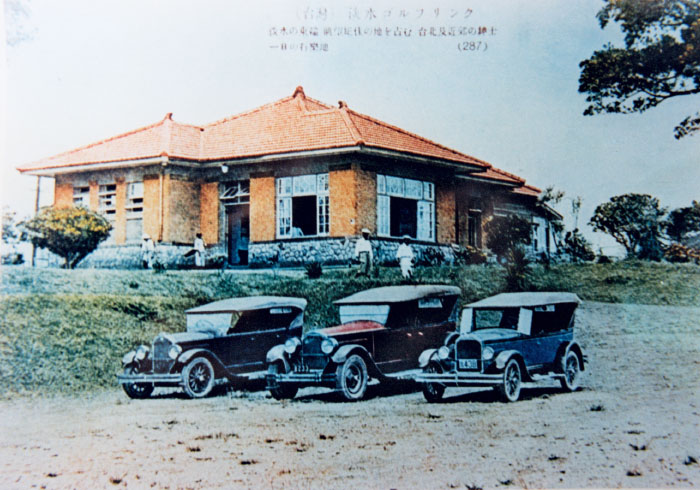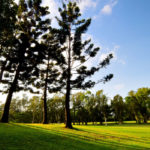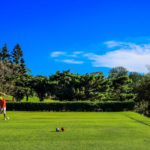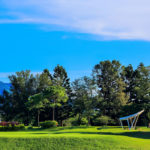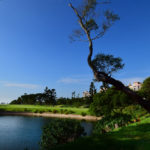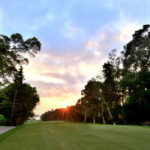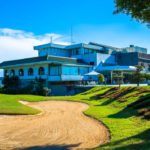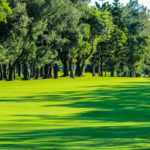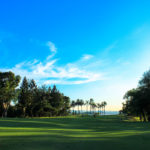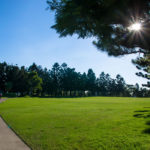1918-1926
According to the Secretary-General of the Government of Taiwan from 1916 to 1921, Ishii Mitsujirō, from the Miscellaneous Notes on Golf in Taiwan:
Matsuoka Tomio, a man called the “King of the Southern Seas”, returned to Taiwan from Manila in April 1918. He dined with the Civil Officer, the Governer-General of Taiwan, Shimomura Hiroshi, the General Manager of Taiwan Bank, Sakurai Tetsutarō, the secretary Secretary-General of the Government of Taiwan, Ishii Mitsujirō, and others at Umeyashiki. He mentioned that in Manila, golf was emerging as a fashionable leisure activity for the upper class. It almost seemed impossible to get in touch with the upper class without joining the sport. After the meal, as gifts, Matsuoka Tomio presented Shimomura Hiroshi and Ishii Mitsujirō with a set of golf clubs and a pair of old golf shoes made in Manila.
In May, the golfer from the Mitsui Co., Ltd., Inoue Makoto, winner of the first amateur open golf game in Japan in 1918, returned from the USA and visited Taiwan. Using this opportunity, those who were interested invited Inoue Makoto to the Machangding Parade Ground in Taipei to demonstrate and teach them how to play golf. The participants included the President of Taiwan Bank, the Secretary-General of Taiwan, Ishii Mitsujirō, the Clerical Officer of the Civil Administration Department, Abe Hiroshi, the Chief of Finance, Tatsuno Kameo, the Accounting Officer from the Finance Bureau, Kikuchi Takehiro, the Clerical Officer of the Sugar Department, Colonial Production Bureau, Civil Administration Department, Fujino Miki, the Clerical Officer from the Commercial and Industrial Department, Tasaka Sensuke, and other major officers from the Government of Taiwan.
At that time, Inoue Makoto asked the facility to assign 50-100 workers to remove the weeds in the N-shaped field at the Machangding Parade Ground in Taipei, which was approximately 600 feet in length and 120 feet in width. They completed this within a few hours and built a temporary course. Tea caddies were buried into the area planned for the green.
Inoue Makoto praised them by saying, “It is unprecedented in the history of golf to complete a golf course in a few hours.” Shimomura Hiroshi played first, while the other participants took turns trying to play golf.
The officers usually practiced in front of the canvas screen. They thought they could hit a golf ball up to 200 yards, but often when they played on the course, they would miss the ball completely! Even when they did hit the ball, it flew wildly into the rough. A few of them stayed on the fairway. It was spectacular to see that officers missed so many balls.
At that time, the Director of the Civil Engineering Bureau, Sumi Gensen, and the engineer Ōkurau came to watch the game on a horse. When they saw the balls flying, they rode as fast as they could to catch them. Even when the workers who previously cleared the course joined in to search the balls, the players did not think it uncommon. They only regretted not being able to hit the golf ball well. The game ultimately ended well. From this opportunity, those interested actively planned to build a formal golf course and searched for a suitable place. The Chief of Customs from the Government of Taiwan, Haru Tsurujiro, suggested that the old parade ground from the Qing Dynasty, which belonged to the army at the time, be used. Therefore, on July 9 1918, the General Manager of Taiwan Bank, Sakurai Tetsutarou, sent a written proposal to apply to formally borrow the land from the Director of Army Management, Lin Zhu-ji. After the application was approved, a shed for the players to have a rest after practicing was immediately built. A piece of land on the parade ground, approximately more than 4 pings, was also applied for in order to build a simple shed with a fir bark roof.
Under the verbal agreement, the application was put into practice in October. Sakurai Tetsutarou and Fujino Miki designed and built a six-hole golf course. All the expenses required for building the golf course were donated by Sakurai in his personal capacity. The construction was supervised by Taiwan Bank, Tamsui Branch, Yasuo Himeno and technician Yasuda Yoshinosuke. The six-hole course, with a total length of 1,224 yards, was built by several workers.
The six-hole course was completed on June 1, 1919, and about 120 officers and civilians from Taipei were invited to the opening ceremony, with 40 of them attending on the day. General Manager of Taiwan Bank, Sakurai Tetsutarou, donated lunchboxes to each of the attendants. After the Chief of the Army Staff, Aida, made a toast, Shimomura Hiroshi tee’d off and began the tournament. According to the conditions at that time, it was nothing more than a gathering of golf-lovers. All the construction, maintenance and other expenses were independently covered by Sakurai, while Himeno from the Taiwan Bank, Tamsui Branch, was responsible for managing and maintaining the golf course.
On November 3 1919, under the reference of the Tokyo Golf Club Charter, a charter with six articles was drafted and the Taiwan Golf Club was officially founded. The Club began to recruit members, with a monthly membership fee of 3 dollars. In 1920, it was proudly announced that the Club would expand the course. However, in August, the founder, Sakurai, resigned as General Manager of Taiwan Bank, retired, and returned to Japan. In November, he was transferred to Europe. The next June, Shimomura Hiroshi also retired and returned to Japan. Because the Club lost its core members, its business declined. At that time, only 4 or 5 members played golf there on holidays. It was difficult to maintain the Club but thanks to the perseverance of several golf enthusiasts, the Club continued to function. In 1922, a 9-hole course was completed with a total length of 1,700 yards and par of 37. New members were recruited for the second time. On holidays, the number of players increased to 14 or 15 people. In March 1922, a clubhouse was built. It was completed in 1923.
The article is based on “Golf in Taiwan,” Sixty Years of Golf in Japan. This book is preserved in the Library of Congress in Washington and was translated and written by Chen Yao-bang, an early member of the Club.
According to A Hundred Years of Sugar Factories in Taiwan: In 1910, Matsuoka Tomio, who originally worked in Taichung’s Operation Improvement Department, established the Imperial Sugar Company and built a new sugar factory after the Sugar Factory Department was acquired. In 1917, cooperating with the South China and South Seas Policy of the General Government of Taiwan, he co-invested and established the South Seas Development Society and also served as the president of News Taiwan, one of the three major newspapers in Taiwan. Matsuoka had unique insights about South Seas.
The historic site is currently preserved under the viaduct of Zhongshan North Road, Taipei City, and was a residence of Dr. Sun Yat-sen when he visited Taiwan.
The work titles were based on the “General Government of Taiwan Staff Registration System,” the Archives from the Institute of Taiwan History, Academia Sinica.
The third General Manager of Taiwan Bank took office on January 24, 1916 and resigned on August 13, 1920.
The area around the now Youth Park and Nanjichang Public Housing.
The original location of Taiwan Golf Club.

